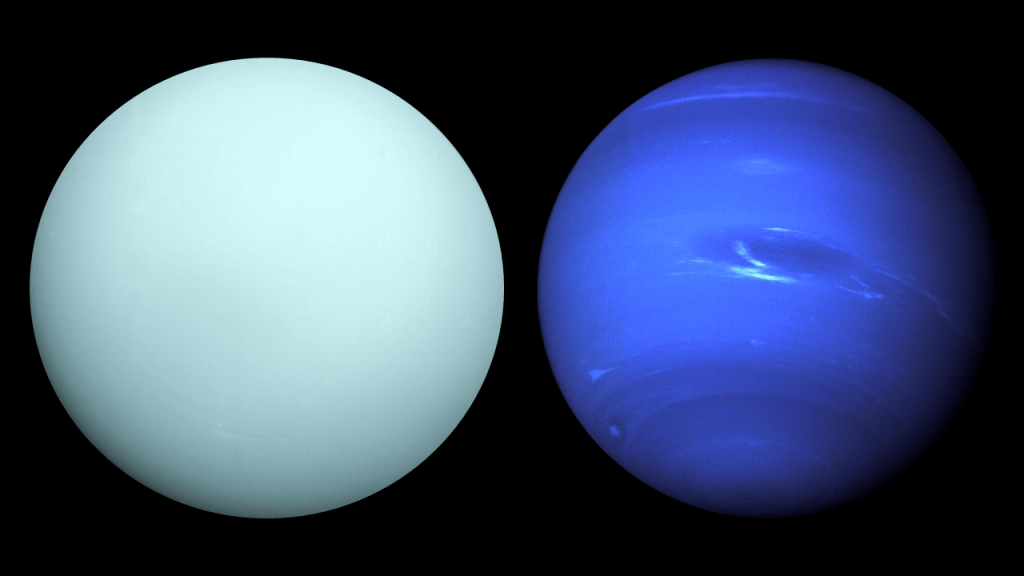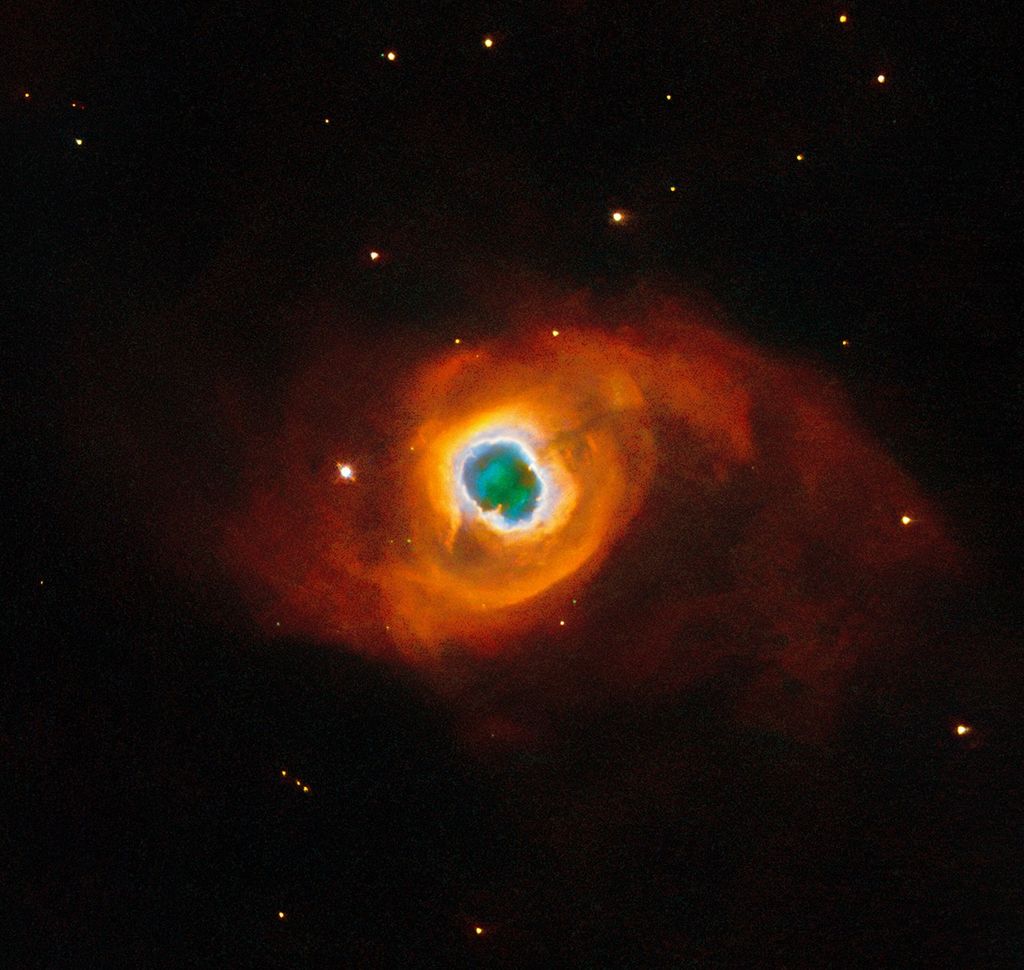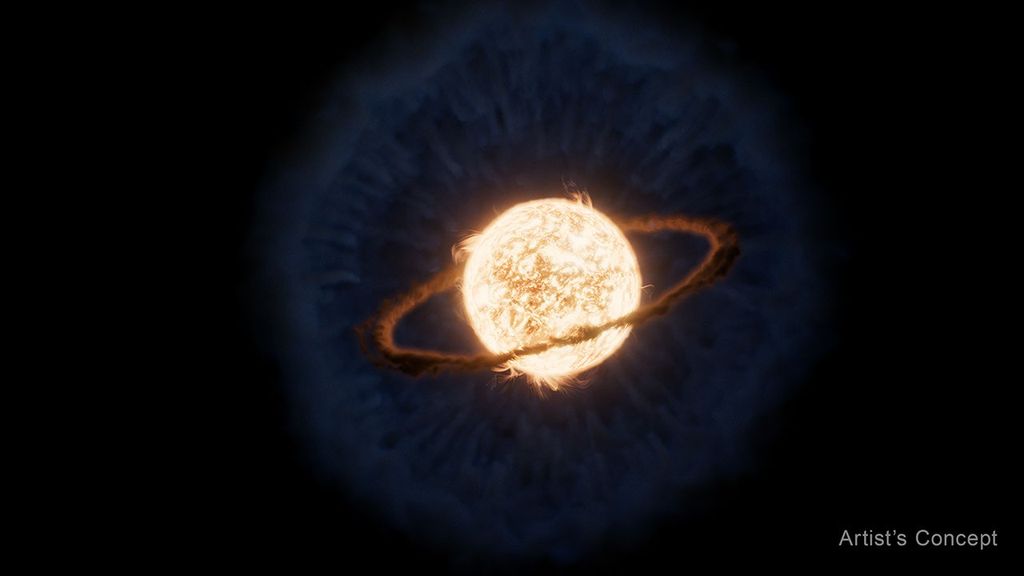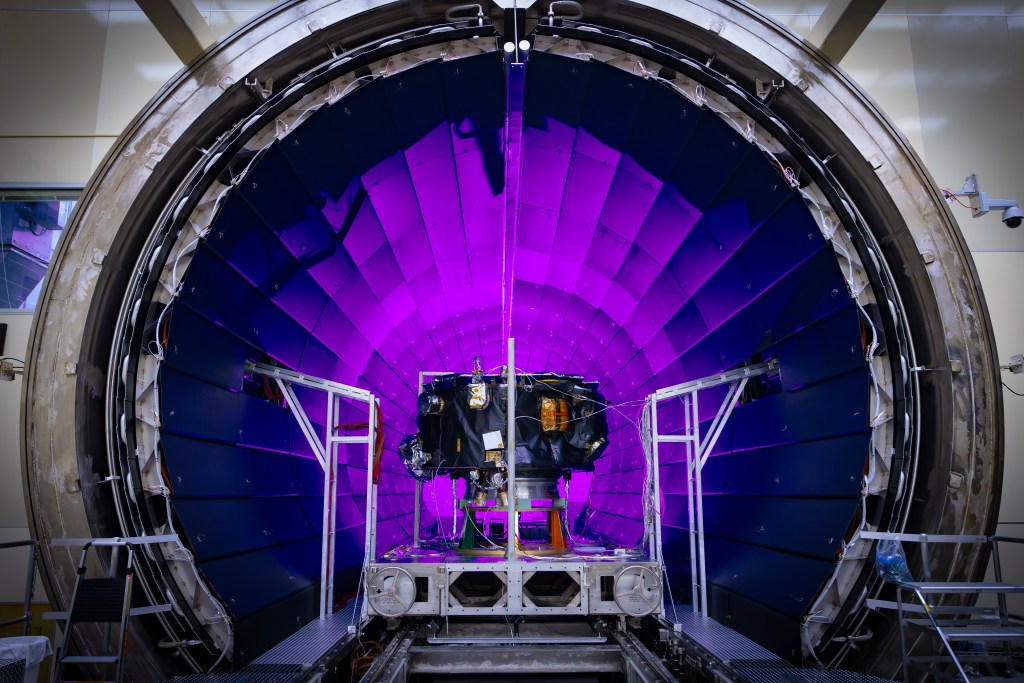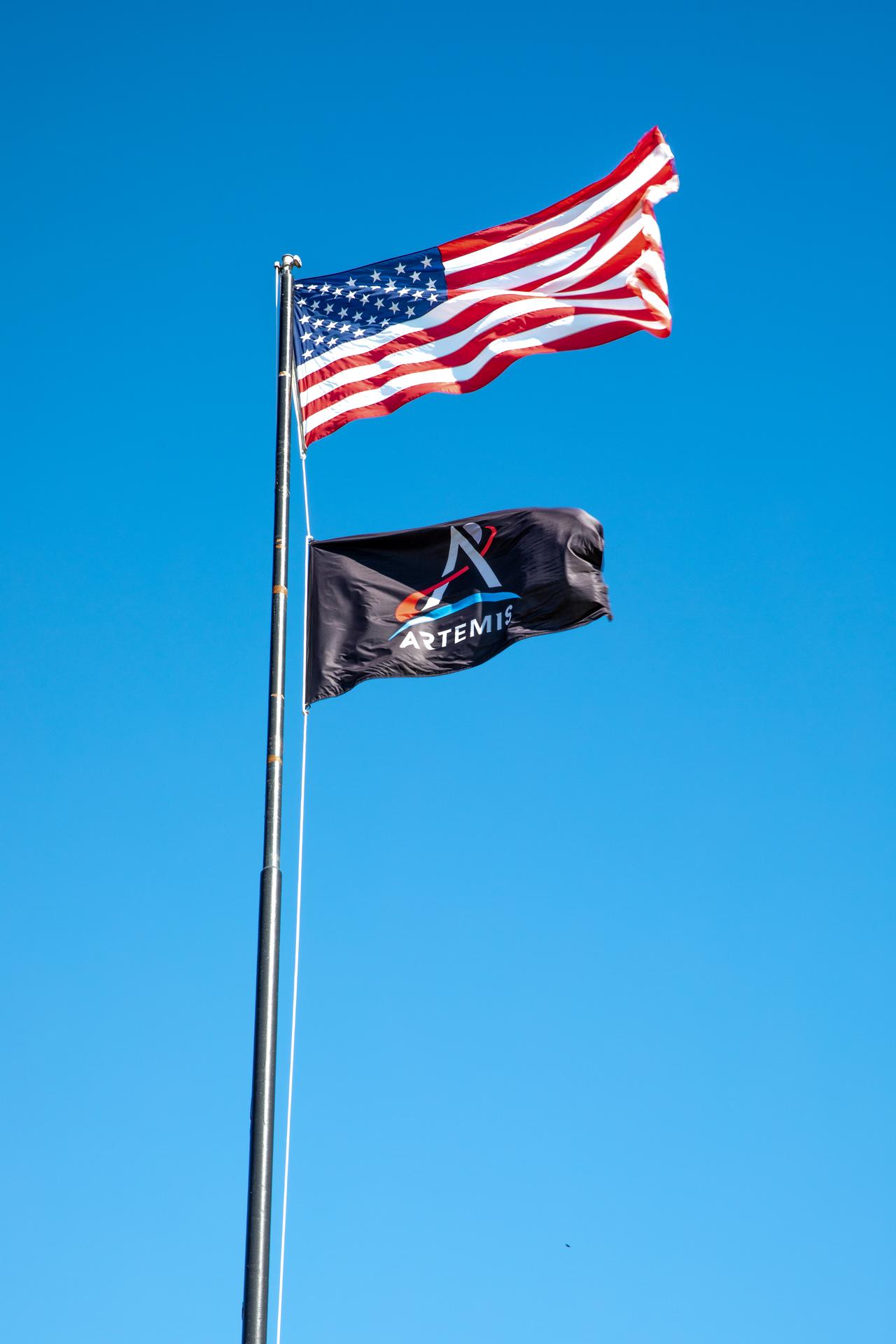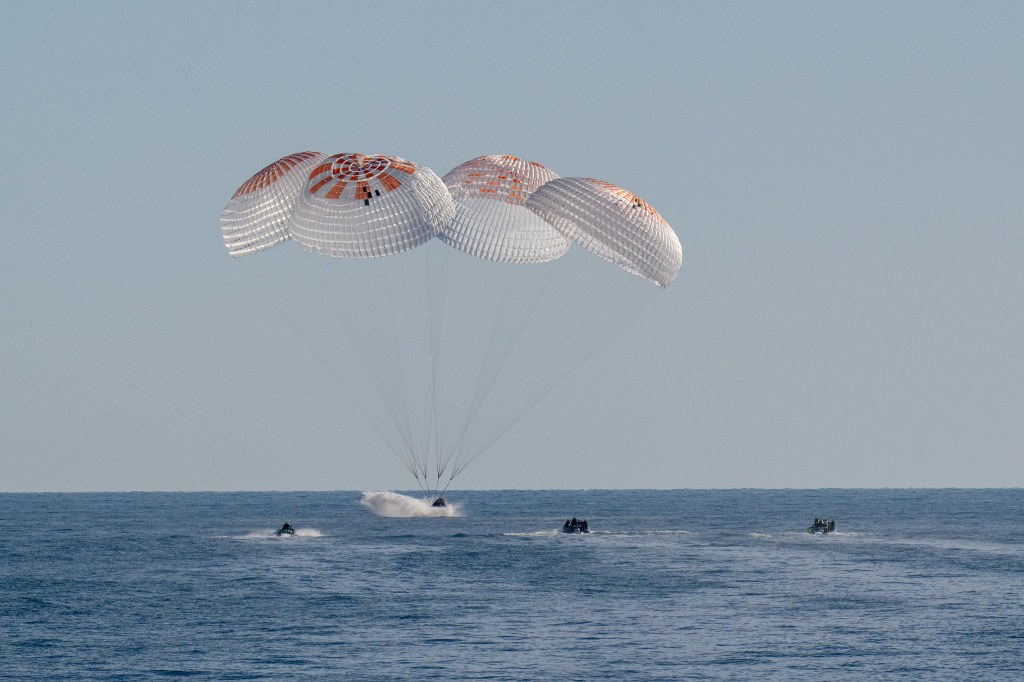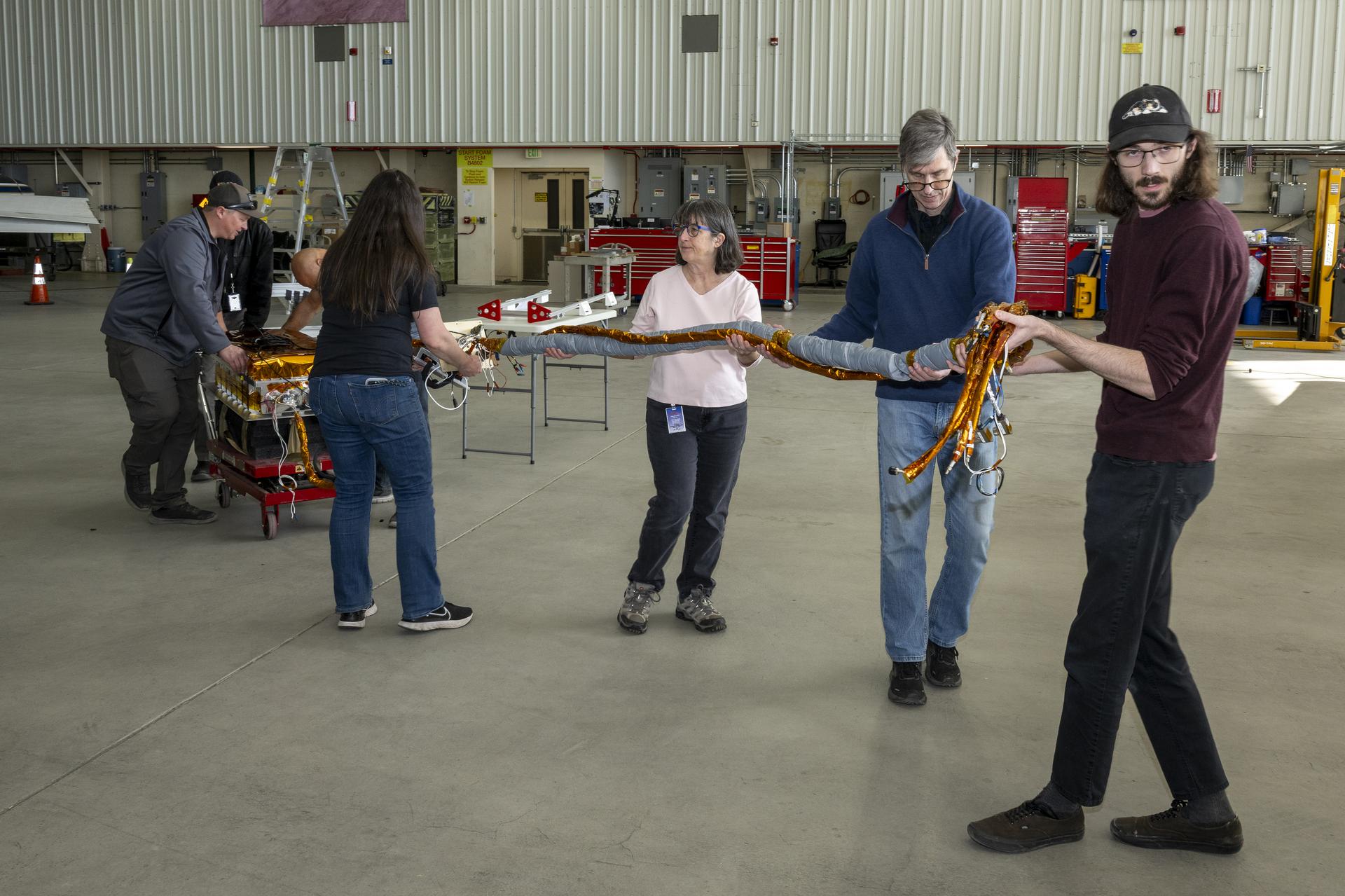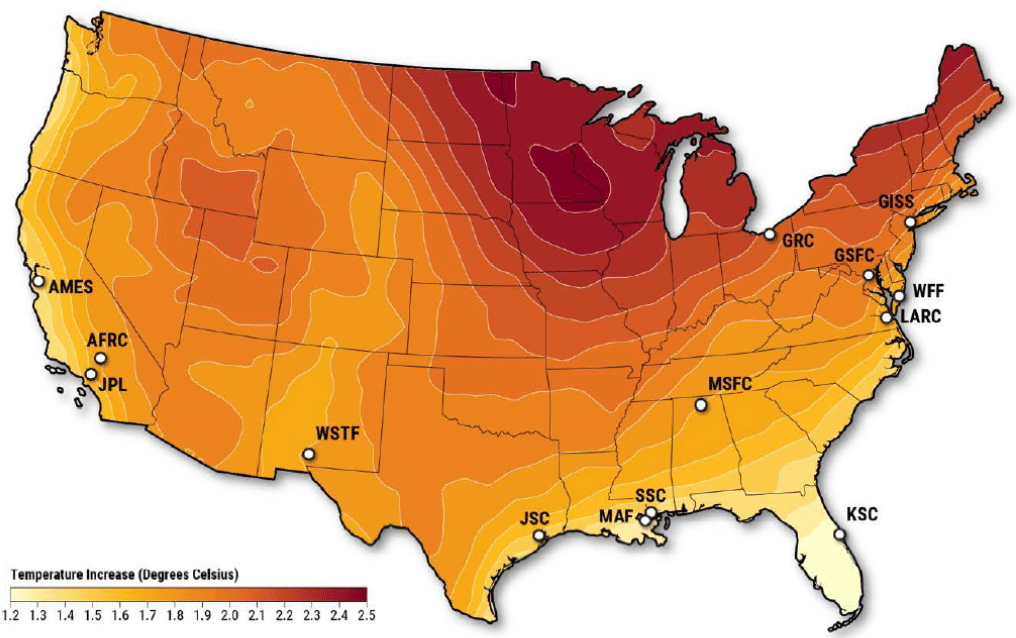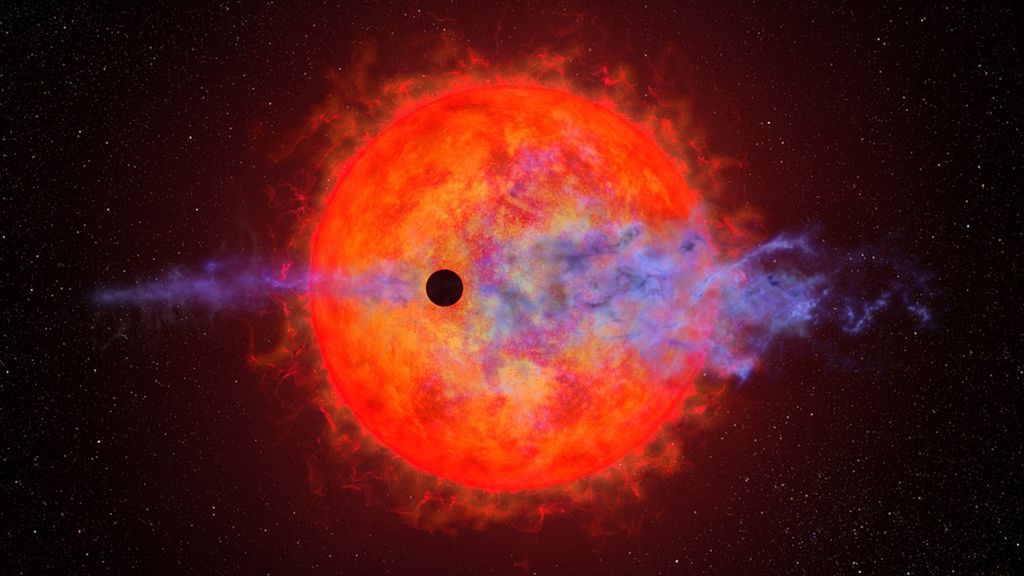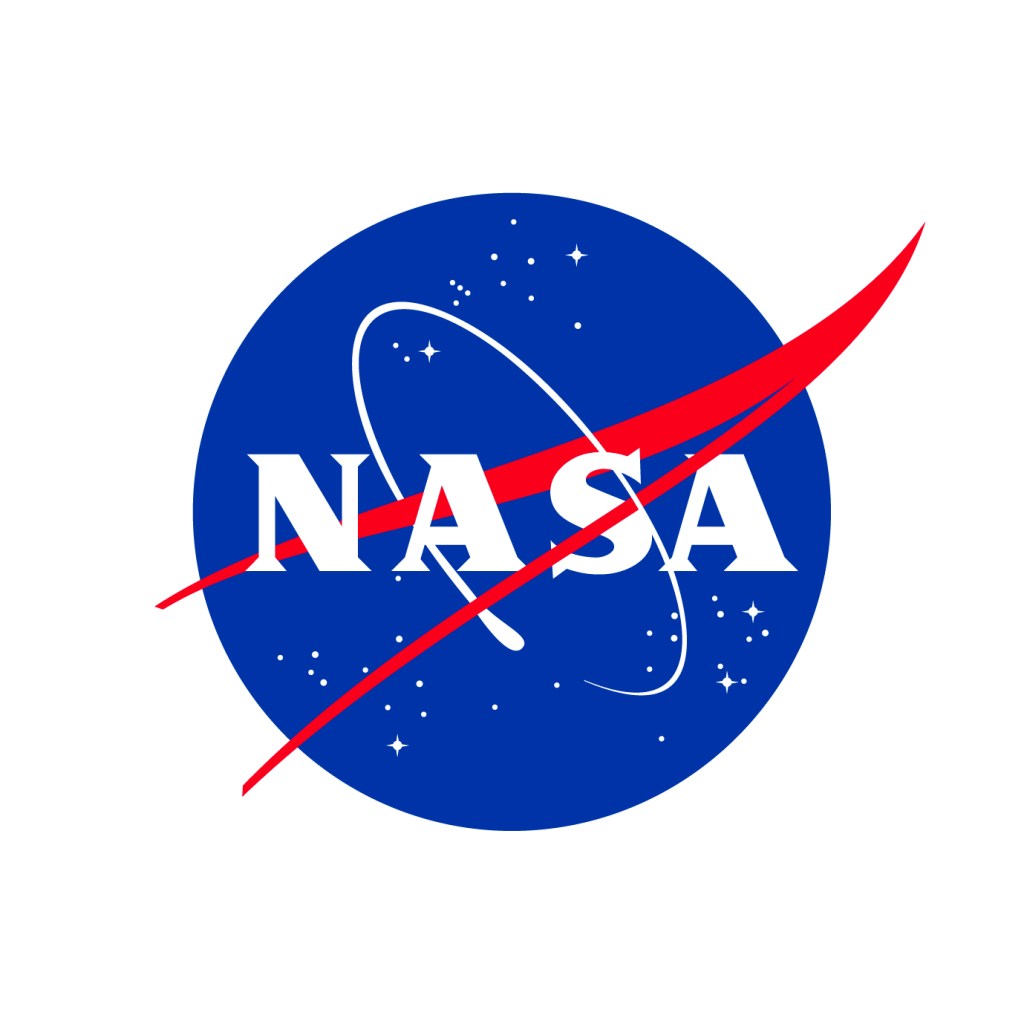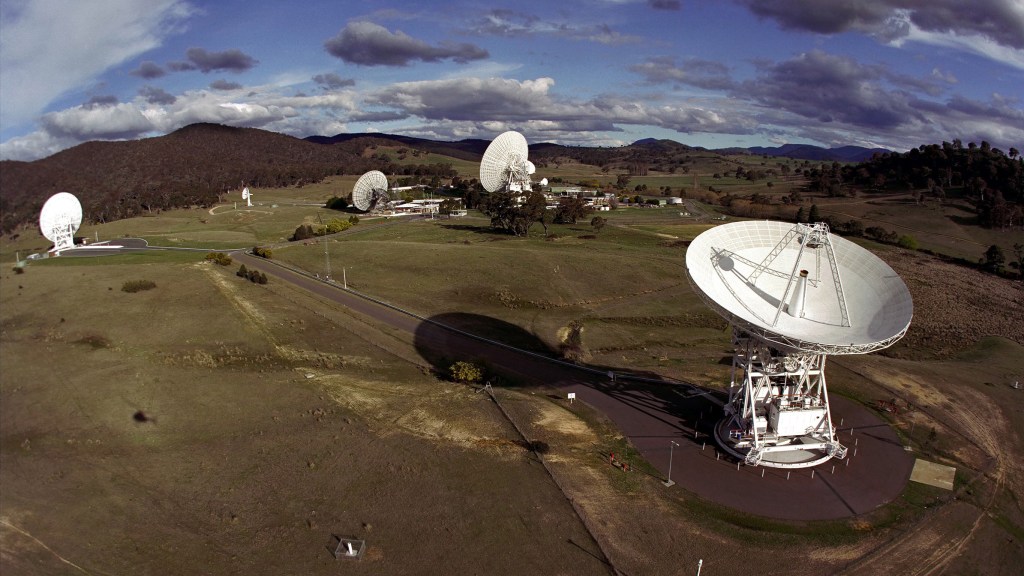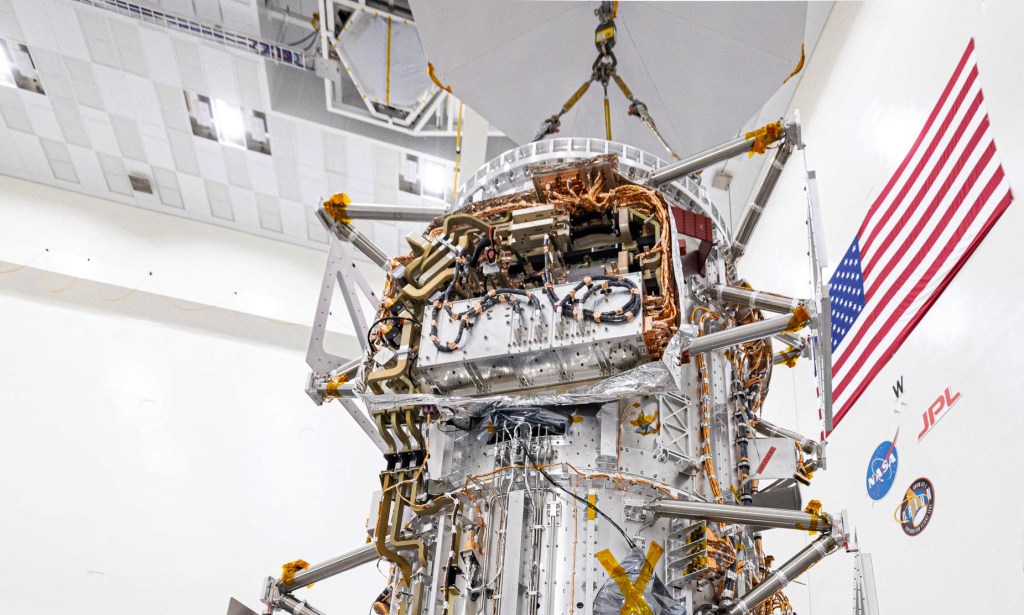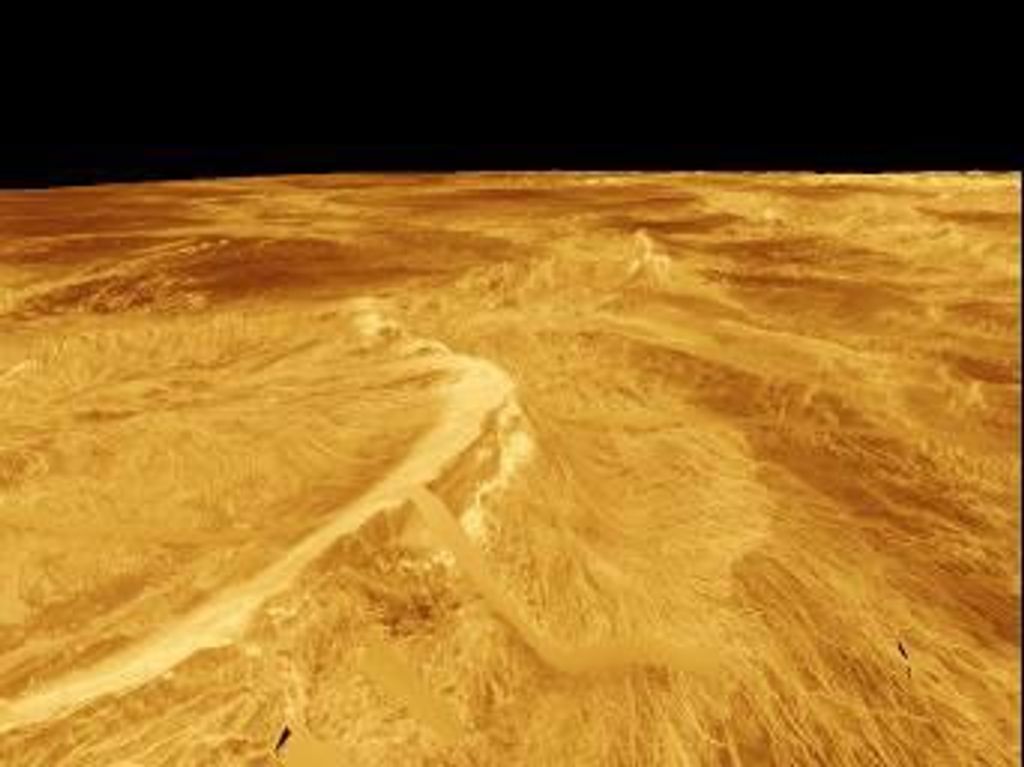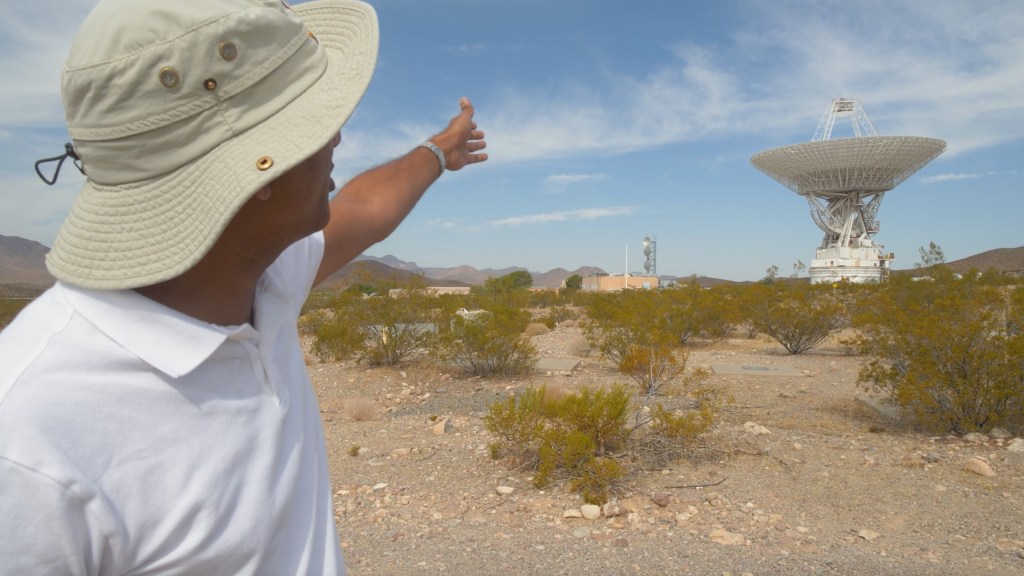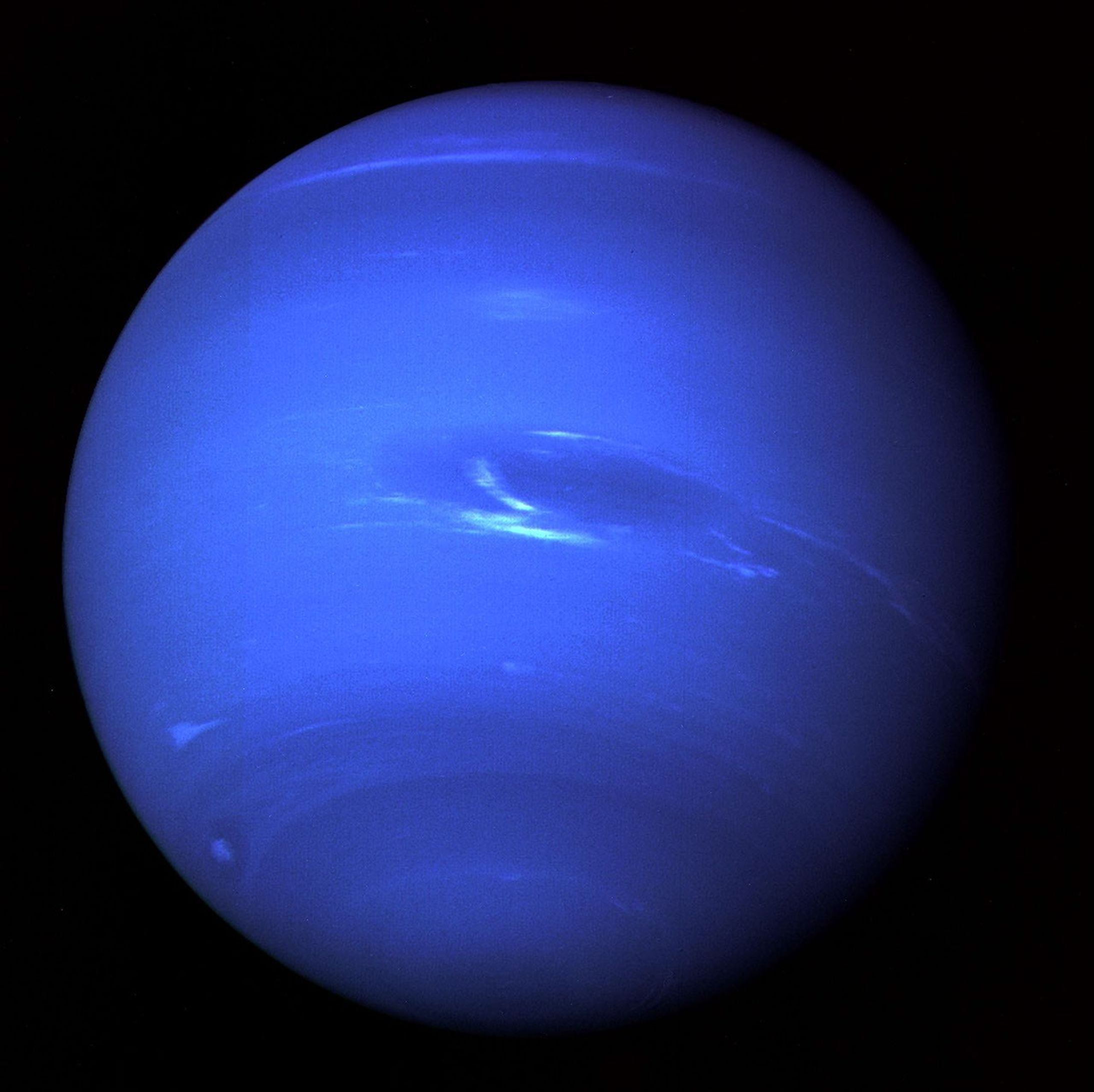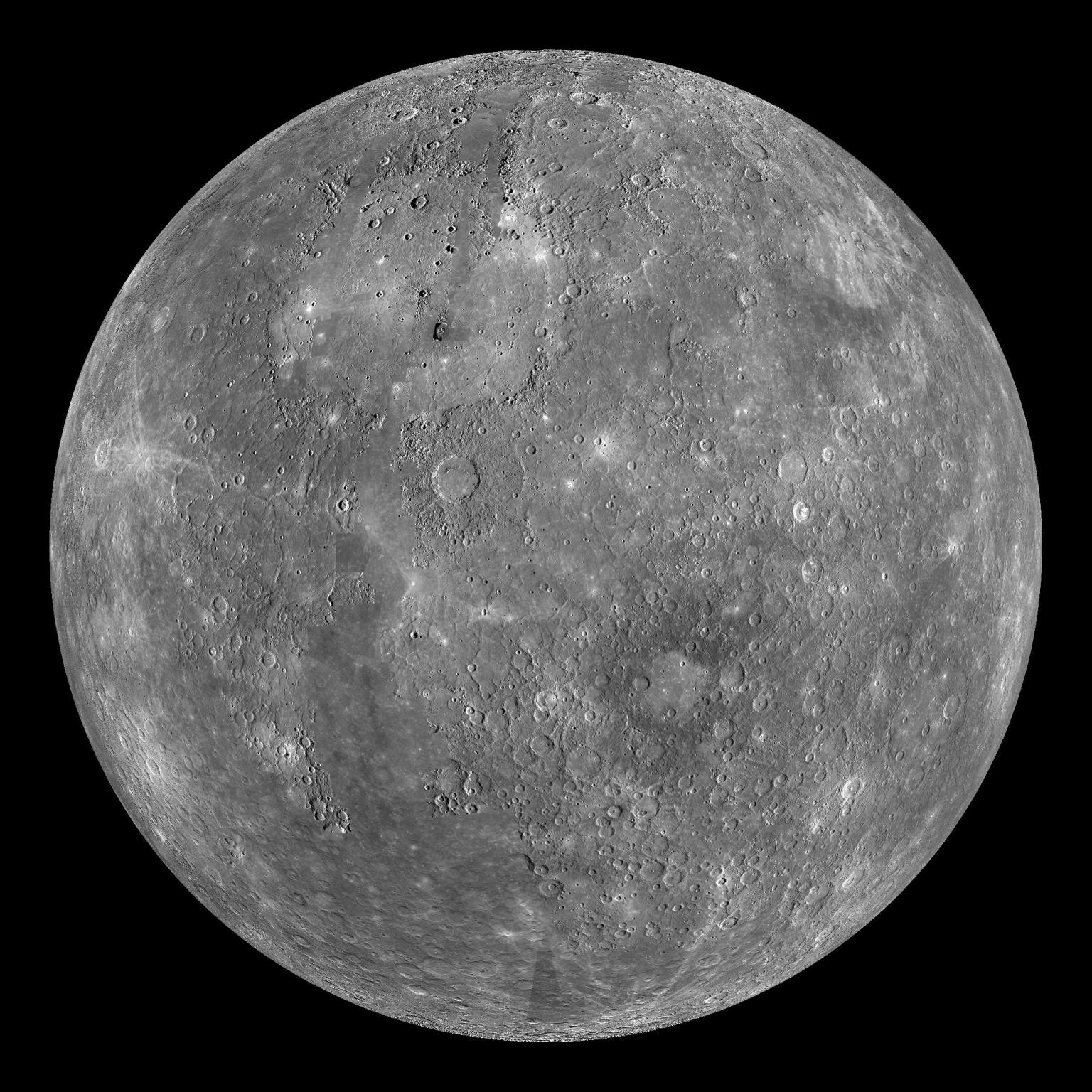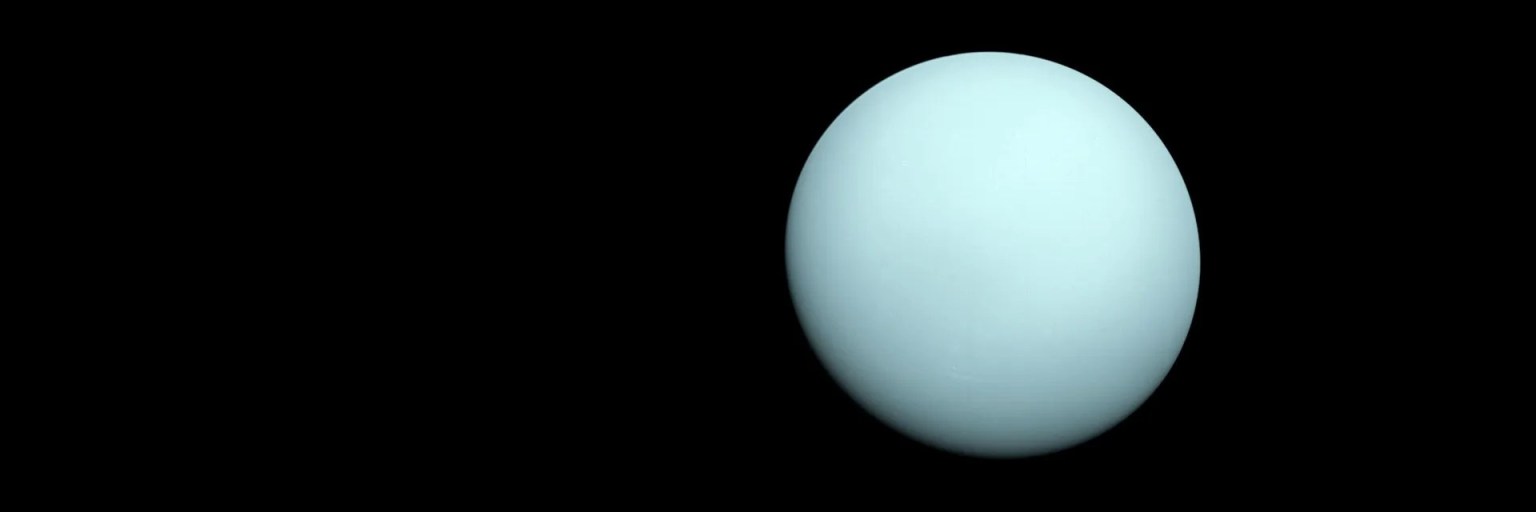
Uranus
Uranus is the seventh planet from the Sun, and the third largest planet in our solar system. It appears to spin sideways.
About Planet Uranus
Uranus is the seventh planet from the Sun, and the third largest planet in our solar system – about four times wider than Earth.
Uranus is very cold and windy. It is surrounded by faint rings, and more than two dozen small moons. It rotates at a nearly 90-degree angle from the plane of its orbit. This unique tilt makes Uranus appear to spin on its side.
Get the Facts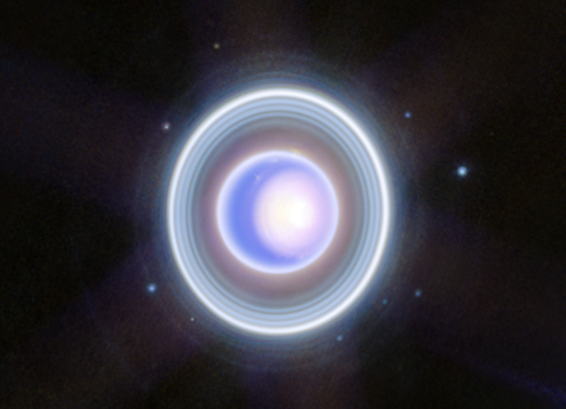
Planet Uranus by the Numbers
How far is Planet Uranus from Earth?
Use this tool to compare the ice giant to Earth, and other planets.
Compare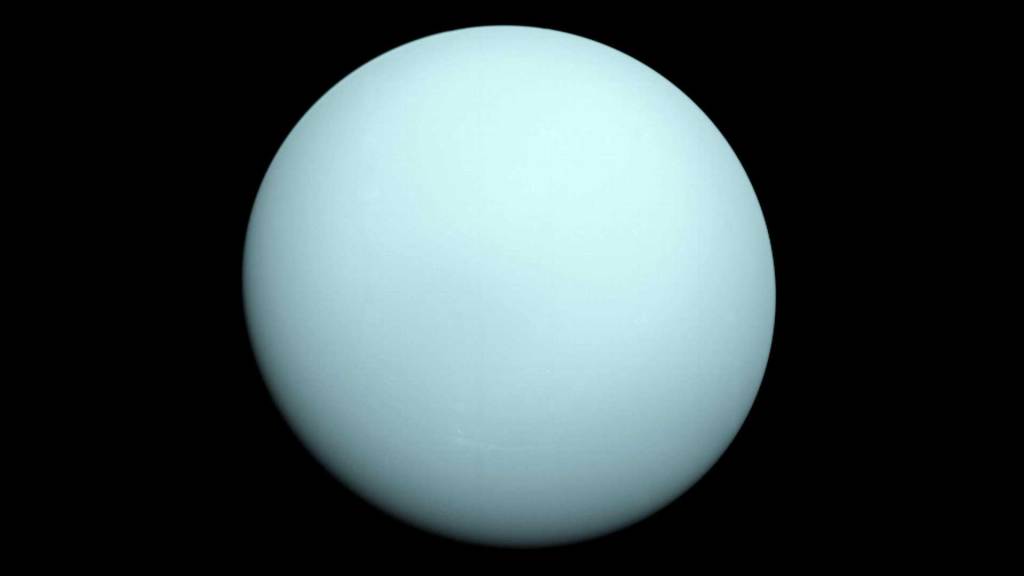
Planet Uranus Exploration
Only one spacecraft has explored planet Uranus.
In January 1986, Voyager 2 made a close approach to Uranus, snapping images of the planet and some its moons.
Read More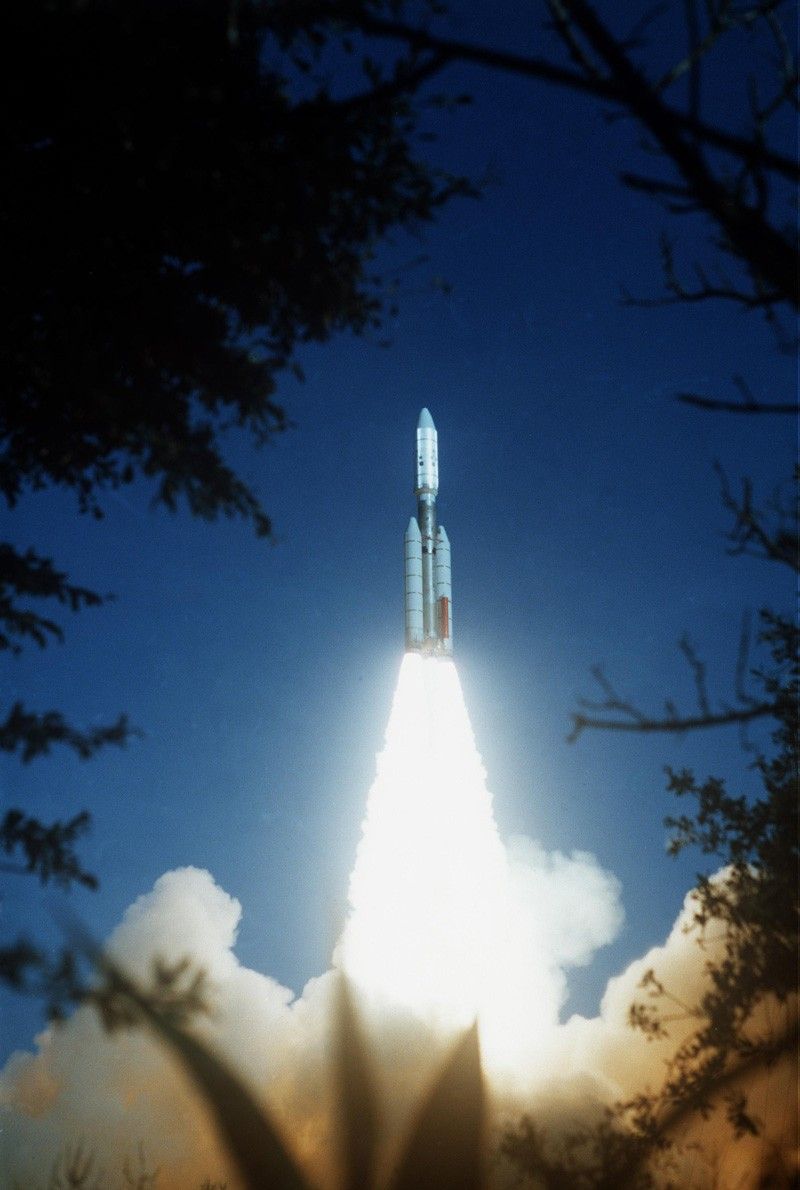
Planet Uranus Moons
Meet the Literary Moons
Uranus has 28 known moons, including five major moons: Miranda, Ariel, Umbriel, Titania, and Oberon. The moons are sometimes called the "literary moons" because they are named for Shakespearean characters, along with a couple of the moons being named for characters from the works of Alexander Pope.
Explore Moons of Planet Uranus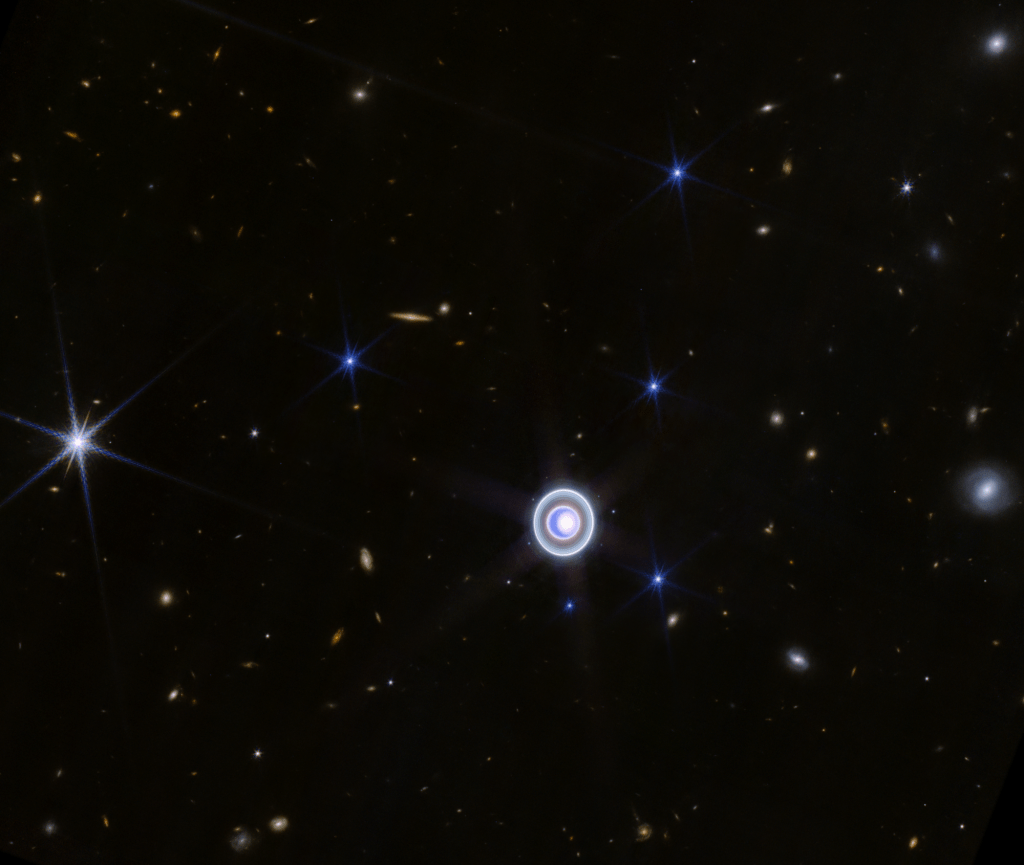
Ice Giant Resources
Resources for Uranus and Neptune.
Explore a curated collection of resources about ice giants, including activities that can be done at home, as well as videos and animations, images, and posters.
Read More